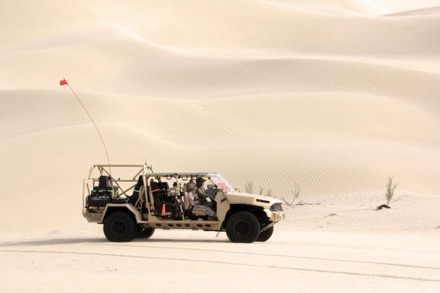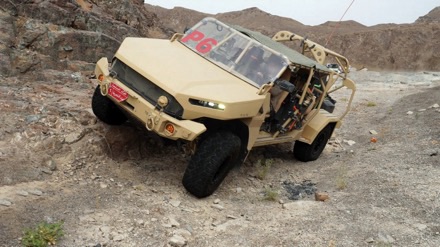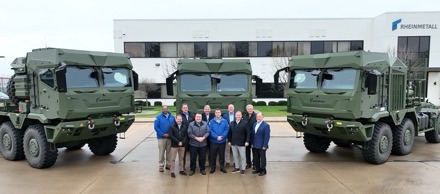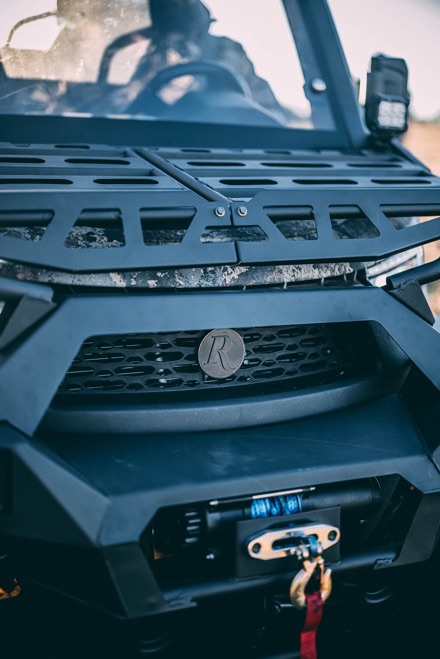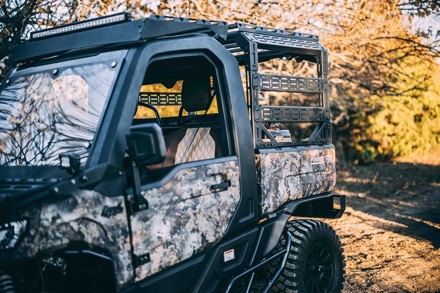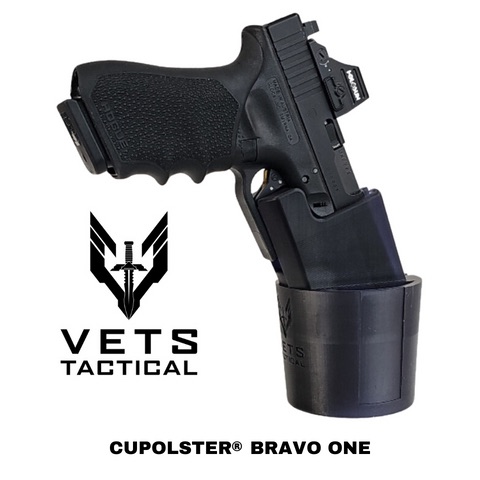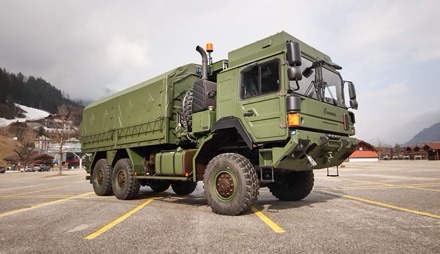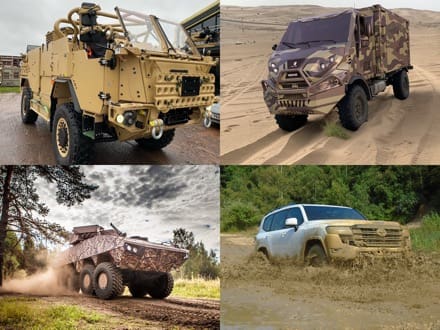
Alcon Components Ltd, the highly acclaimed UK-based brake and clutch company, is celebrating the key milestone of 15 years since supplying their first fully designed for Defence caliper. The company has deep roots in the highest echelons of motorsport and performance automotive that have been extended, over time, to include multiple other specialist sectors. As well as a considerable 25(+) years in defence and
security, Alcon has also effectively diversified into aerospace ground support, agriculture, mining, emergency services, leisure off-road, light commercial, off-highway and electric vehicles.
Having been supplying heavy duty brake kits for armoured vehicles to companies such as Jankel and Jaguar Land Rover since the 1990’s, the very first bespoke Alcon defence project was an iron caliper solution for Ricardo started in August 2008. Alcon were asked to provide prototype calipers for a modified RWMIK Land Rover that was going to be demonstrated to the UK MoD that October. Alcon designed, manufactured, and
tested a six-piston aluminium billet caliper within six weeks that was used on the demonstrator vehicle. They received an order for production components in November 2008, which allowed the company to tool up for their first production iron caliper, delivered in early 2009.
This project was shortly followed by an order from Supacat to improve the Jackal braking system that had become overmatched by the addition of heavy armour systems, to meet increasing threats in Afghanistan. This project included iron calipers, braking discs, and friction pads. The iron caliper range is now firmly embedded into the Alcon offering across multiple applications, alongside their aluminium high performance and motorsport ranges.
Alcon’s journey into the defence and security sector has been split across three different strategic approaches: off-the-shelf kits for companies armouring SUVs; bespoke braking solutions for OEMs; and the
supply of braking solutions to established axle manufacturers who sell into defence and the off-highway vehicle markets (amongst others). Across all three areas, Alcon’s defence and security business has grown 500% in the last 2 0 years and their specialist vehicle division now delivers around 20% of Alcon’s total annual revenue, on average.
Since the first bespoke Defence project was delivered in 2008, Alcon’s defence and security customer base has grown steadily to include over 15 defence vehicle OEM’s with bespoke Alcon braking solutions including BAE, QinetiQ, Patria and Supacat. On the kit side, Alcon has sold off-the-shelf kits to over 50 armouring companies including JLR, Babcock, Jankel, UTAC and many others, for vehicles including Toyota, Ford,
General Motors, Jeep, Lexus, Land Rover, Mercedes, Nissan, Chrysler (Dodge/RAM) and Skoda. Axle customers have included AxleTech, BASE, SISU and PRM Newage with the heaviest single caliper having been designed for AxleTech (now Cummins) weighing 27kg each. Vehicle weights range from 1,500kg to 60,000kg and applications range from heavily armoured tracked vehicles to lightweight side-by-side ATVs plus, everything in between.
Jonathan Edwards, Group Sales Director at Alcon said: “Working in defence and security makes us
exceedingly proud as we know that the improvements in performance and safety that our braking systems deliver, help to save the lives of those operating in dangerous and harsh environments with militaries and NGO’s. In the last 25(+) years, we’ve worked with over 80 different defence and security customers and in that time, we’ve manufactured and delivered tens of thousands of brake components for this sector.
The transition from aluminium to iron calipers in 2008 was a pivotal move for us as it has since opened up wide-ranging opportunities in specialist areas other than defence”. He added: “We’ve absolutely proven ourselves to be the place to come to for bespoke or off-the-shelf braking solutions that increase performance, reduce weight, improve safety, and reduce through-life costs. Today’s celebration of success is a proud moment for me and for the entire team. I thank all our defence and security customers for trusting in us and we look forward to continuing to deliver our ongoing growth plans in this important marketplace”.


